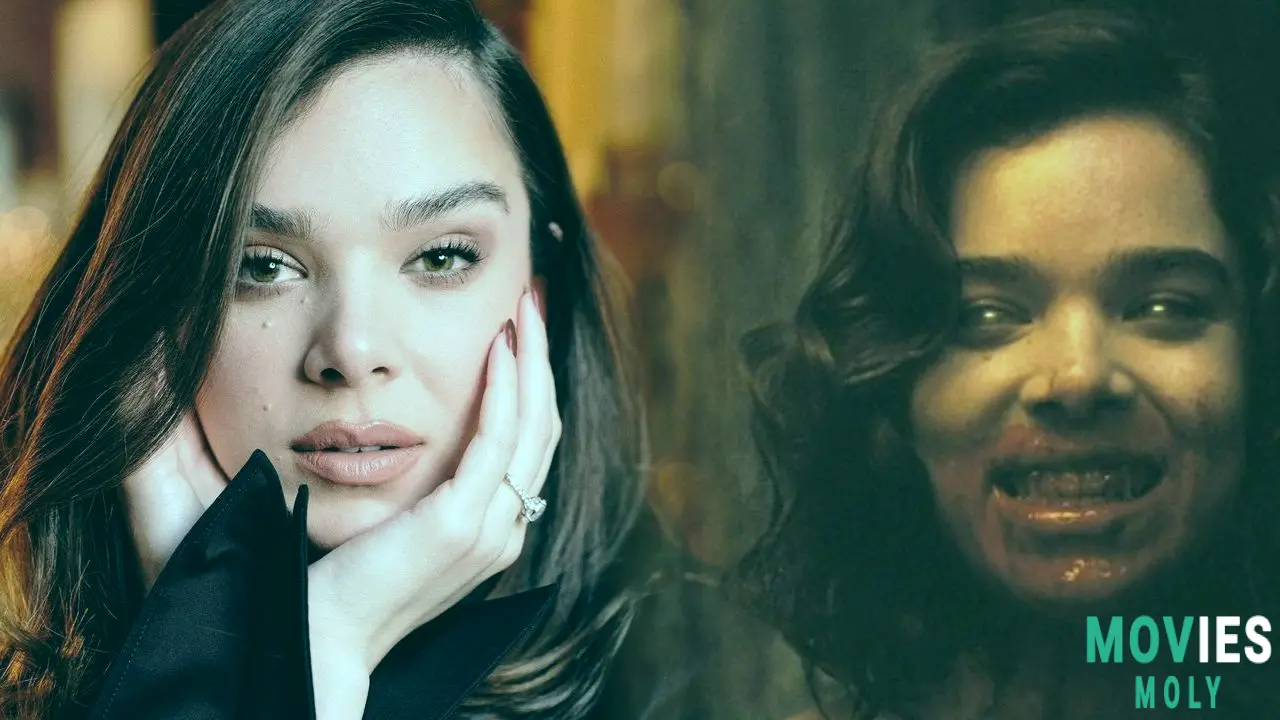By Nicolas Ayala
If Hailee Steinfeld’s career were a superhero arc, her performance as Mary in Sinners would be the epic third act twist that elevates her from fan-favorite to full-on genre icon. The same Steinfeld who captured hearts as the sharp-witted, awkwardly lovable teen in The Edge of Seventeen and soared into comic stardom as Kate Bishop in Hawkeye now steps into a blood-soaked, blues-driven vampire horror with the emotional weight of a soul aged a century. Directed by Ryan Coogler and unleashed through Warner Bros., Sinners isn’t just a film about supernatural creatures—it’s about grief, identity, and the inescapable pull of one’s roots. And Steinfeld? She owns it.
Hailee Steinfeld’s Mary in Sinners is a Character Full of Contradictions and PowerPlaying Mary, Steinfeld dives headfirst into a character who’s “living in two worlds,” as she puts it. Set in the 1930s South, the film throws Mary into a vortex of emotional and societal conflict after the death of her mother—her only tether to a culture she’s already drifting from. Caught between loneliness, loss, and a desire for authentic connection, Mary’s journey is as sharp and soulful as the blues soundtrack that follows her like a ghost.
“She wants to be with the people who accept her for who she is,” Steinfeld says. And that desire—so simple yet profound—drives every choice Mary makes. Even when those choices lead her into darkness. Literally.
What makes Mary truly unforgettable is her awareness. She’s white-passing in a segregated world, and she knows the privilege that comes with it. But instead of shying away from that reality, she navigates it with a delicate balance—“constantly learning how to move through her two worlds without hurting anyone,” Steinfeld explains. Her actions aren’t rooted in selfishness; they’re rooted in a universal human need: to be understood.
Sinners Gave Steinfeld a Personal Connection to Her Heritage She Hadn’t Explored Before
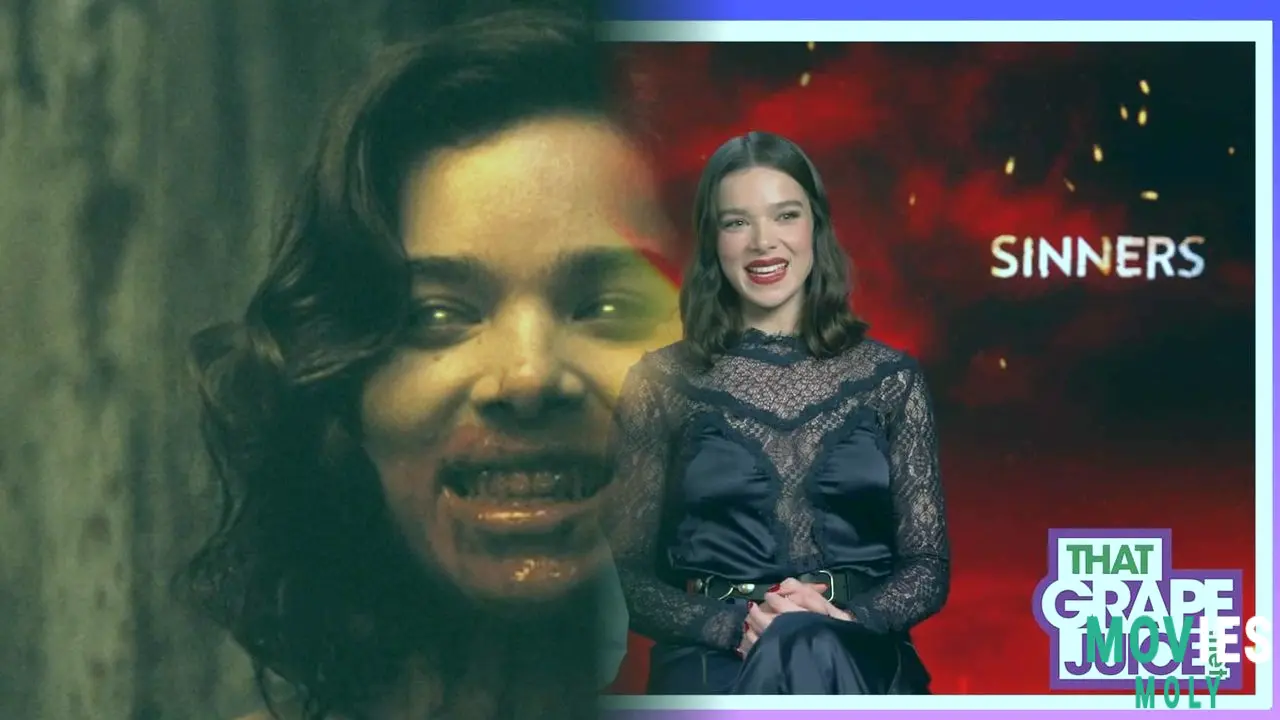
For a role so steeped in cultural and emotional layers, Steinfeld found herself digging into her own family history. Inspired by Mary’s complex relationship with her identity and her past, she began exploring her lineage—particularly her late grandfather, who was half-Black.
“I sat and talked for hours with my mom about him,” she recalls. “I took what I knew—and all the questions I wish I could call him and get answers to—with me and put that into Mary.”
These intimate conversations gave Steinfeld not only a deeper understanding of her character but also opened a new chapter in her personal life. “It brought me so much closer to myself and to my family,” she says. “I carry my heritage with such pride, and I’m so grateful to this character for opening up a conversation for me within myself and within my family that we hadn't quite had before.”
The Juke Joint, the Music, and the Mother’s Presence Make Grief Tangible in a Unique Way
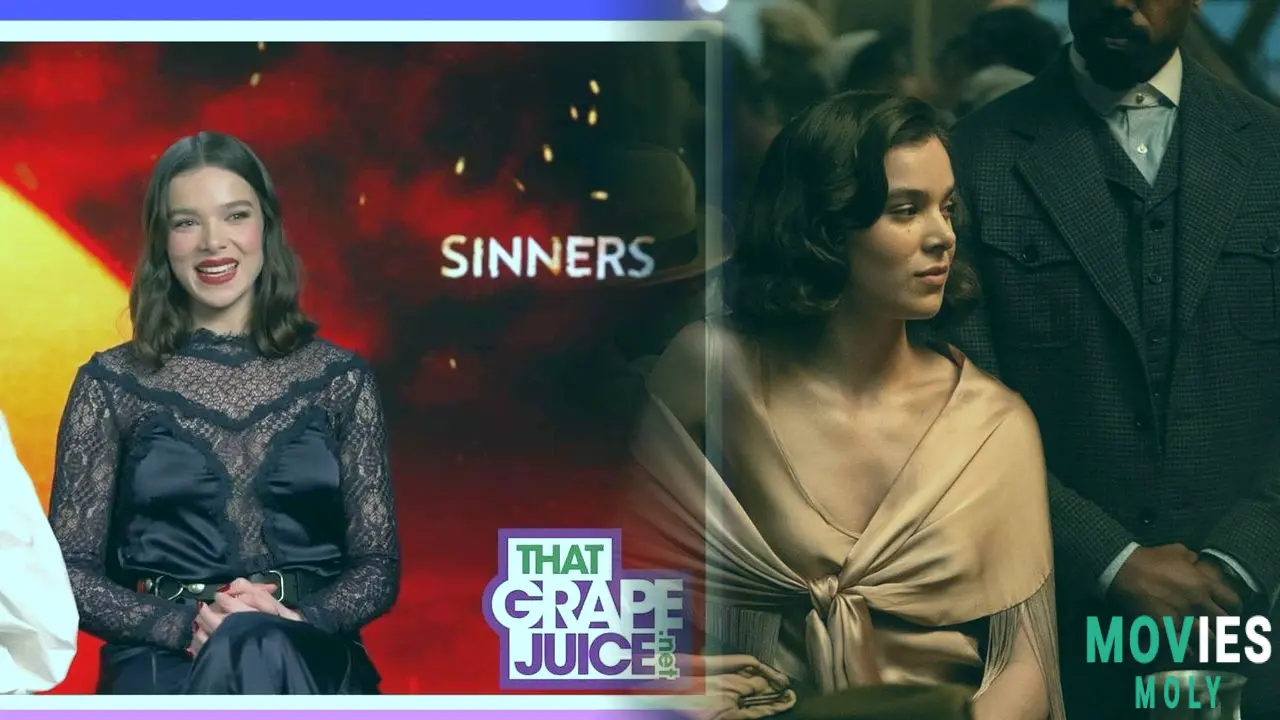
In Sinners, the blues aren’t just background noise—they’re emotional echoes, safe spaces, and even characters in their own right. Mary’s connection to the music is deeply tied to her mother, and Steinfeld masterfully conveys how loss can redirect us to familiar comforts, even when we’re desperate to escape.
“I'm not here to see you — I'm here for the blues. I'm here to hear my mom,” Mary says in a moment that's sure to strike a chord with anyone who’s ever sought shelter in art during sorrow. The music is her home. Her mother's voice. Her anchor.
And even when the story drags Mary into a violent, supernatural spiral, her emotional core remains intact. As Steinfeld puts it, after a pivotal twist, you'll see “a heightened version of Mary. Same Mary, same desires, same wants, same needs—just heightened.”
Working with Coogler and Jordan Elevated Steinfeld’s Performance to a New Level
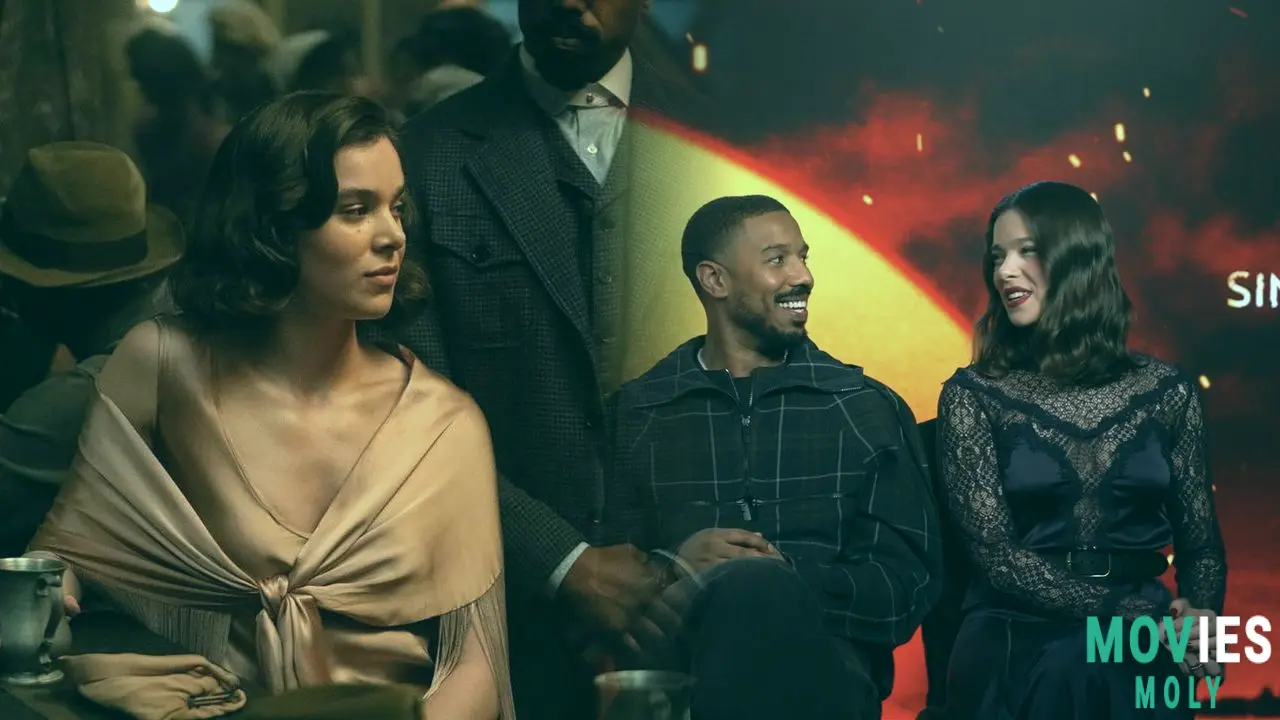
Steinfeld’s collaboration with Ryan Coogler is nothing short of transformative. She describes their creative rapport as a constant loop of discovery—“the process of developing this character didn't end.” Coogler, who clearly understands how to write for and work with actors, pushed Steinfeld into spaces where her performance could truly soar.
And then there’s Michael B. Jordan. Playing twin brothers Stack and Smoke, Jordan delivered a dual performance that left Steinfeld—and everyone else—utterly floored. “He was working double time, overtime, all of the above,” she says. “And he made it so easy for all of us.”
Steinfeld even marveled at how Jordan embodied the two characters so distinctly that her on-set interactions with him shifted depending on which twin he was playing. It’s the kind of actor-ally that makes complex scenes possible, and Steinfeld clearly thrived in that creative ecosystem.
The Practical Effects and IMAX Filming Added an Extra Layer of Awe to Steinfeld’s Experience

One of the coolest behind-the-scenes facts about Sinners is that Steinfeld and the other actors wore special contact lenses for the vampire eye effect—lenses so advanced that they couldn’t actually see through them. Filming intense scenes while practically blind? Yeah, that’s commitment.
Combined with the fact that many sequences were shot on IMAX film—inside a constantly moving, music-blasting juke joint—Steinfeld describes the experience as “so wild” and “so intricate.” There’s a surreal moment in the film where time itself seems to bend, and Steinfeld says she had to fight not to break character by simply being amazed.
“This is our ancestors. This is everything that Ryan has ever thought of with this movie coming to life right before our eyes,” she says. “I had so many moments on this movie where I was reminded why I do this and why I love this.”
Even with an Oscar Nod at 14, Steinfeld’s Love for Her Craft and Fandoms Never Wavers
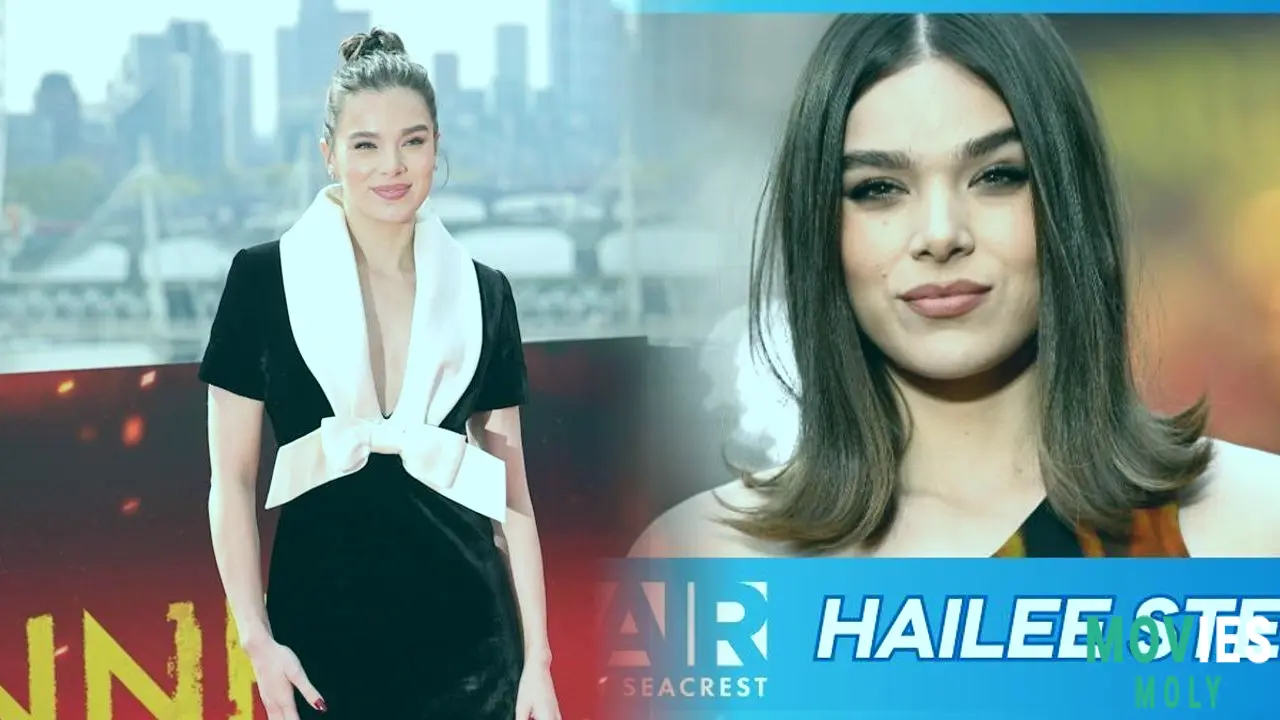
Hailee Steinfeld may have been Oscar-nominated at 14 for True Grit, but that early acclaim didn’t change her core. She fondly recalls how big studios and press teams once swirled around her and how veterans like Josh Brolin and Matt Damon helped keep her grounded. It’s a pattern she knows well—big break, big hype, then find your footing.
She’s never stopped being a fan herself, either. Whether it’s her love for the Pitch Perfect series she jumped into as a fan of the original, or her excitement about being part of the Marvel chaos with both Gwen Stacy and Kate Bishop, Steinfeld embraces her roles with genuine enthusiasm. “As a fan, I’m so excited to see where [Kate] goes,” she says. “And to be a part in any and every way that is in store for her.”
Steinfeld Is Returning to Music—and She’s Fangirling Again, Just Like the Rest of UsAnd if you’ve been missing her music, you’re not alone. Steinfeld is making a comeback on that front too, with a song called “Dangerous” on the Sinners soundtrack. She describes the experience of combining her love for music and acting in one project as nothing short of a dream.
“I was able to open the door again to work on something that I'm very, very, very excited about,” she says. “I can't wait to share more with people. It's been a long time, and I didn't realize how much I missed it.”
Hailee Steinfeld’s Career Is Like Mary’s—Complex, Fearless, and Full of Untapped PotentialIf Mary is a character who refuses to be boxed in, who lives in contradictions but remains utterly authentic, then Hailee Steinfeld is that character in real life. Sinners may be her most genre-forward role yet, but it’s also her most personal, and that combination is what makes it so powerful.
Steinfeld hasn’t just grown up in front of us—she’s evolved, experimented, and now, she’s exploded onto the next phase of her career. Whether she’s aiming a bow at intergalactic threats, singing her heart out in a vampire horror, or creeping into directorial territory inspired by Coogler, one thing is clear: Hailee Steinfeld is just getting started. And like Mary, she’s not going anywhere.

